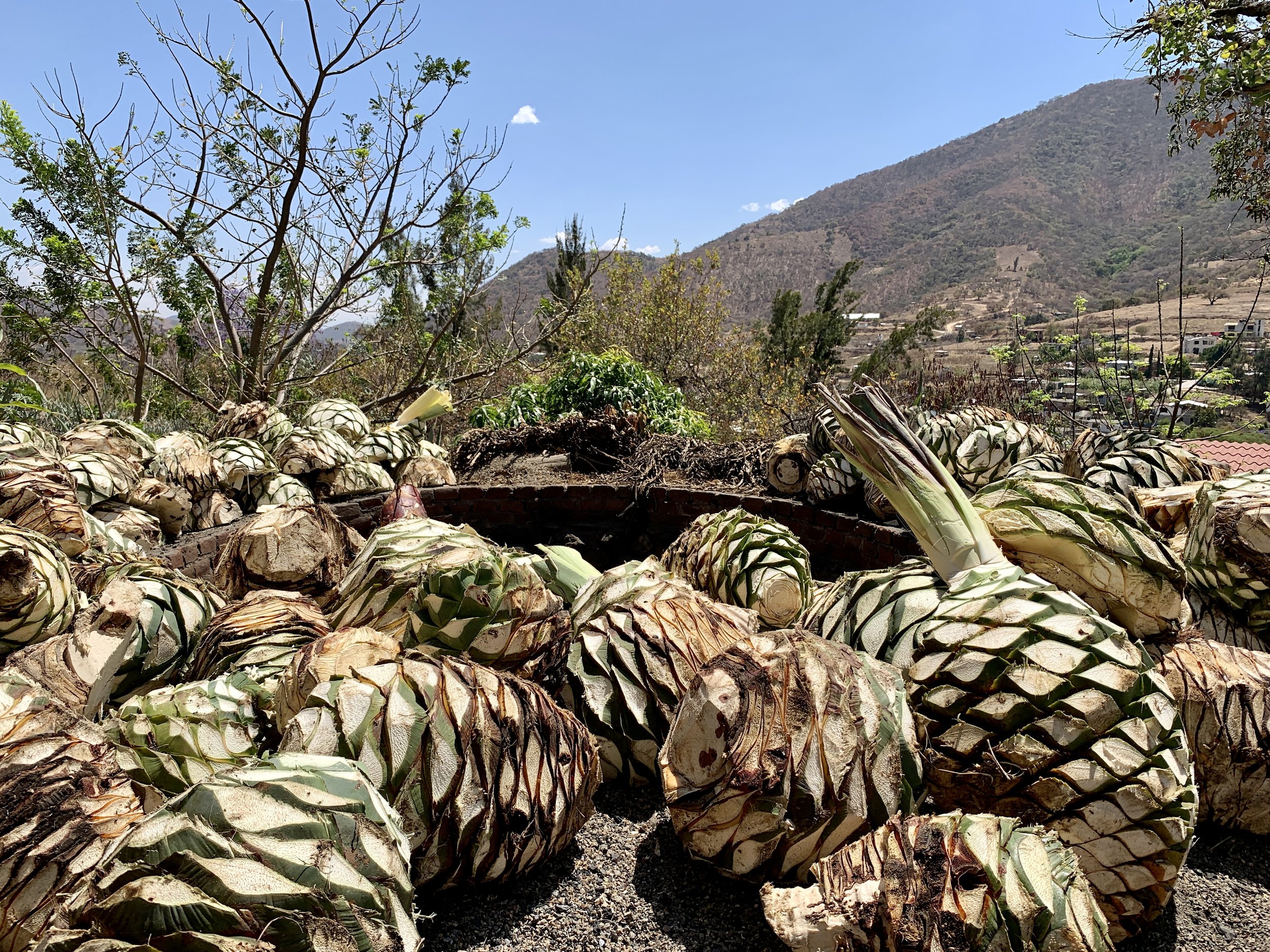
“My destilado is made with all the love and dedication it needs for it to be of unmatched quality.”
— José Alberto Pablo
MAESTRO PALENQUERO
José Alberto Pablo is a multi-generational maestro palenquero in San Bernardo Mixtepec, Oaxaca, Mexico.
José Alberto creates destilado in the tradition taught to him by his father and grandfather — milling by hand, fermenting and distilling in clay pots — and has integrated sustainable practices to ensure he and future generations can produce and enjoy the family’s agave spirits.
MAKING DESTILADO IS A FAMILY AFFAIR.
During the process of harvesting, cooking, fermenting and distilling agave spirits José Alberto is joined at various times by his wife, mother, brother, children, as well as friends from the pueblo whom he employs.
Watch the process
HARVESTING ESPADÍN
FROM HIGH IN THE CENTRAL VALLEY OF OAXACA
José Alberto Pablo harvests agave (maguey) locally from his fields high above his hillside palenque at an elevation of approximately 1651 meters, or 5416 feet.
José Alberto maintains his agave fields without pesticides and fertilizes with used bagasso collected after distillation. He also cultivates young maguey at his palenque, transferring and replanting a few thousand plants to the fields throughout the year.
In addition to the agave fields, José Alberto is part of a local collective that maintains and protects forest land that provides source firewood for the pueblo, and also for his cooking and distilling process.
7AM. BUILDING EL HORNO.
After harvest, the agave piñas are cooked for 3-5 days in a river rock-lined conical oven (el horno) which is fired by locally-sourced walnut (nogal).
The oven’s capacity is approximately six tons of piñas, which will result in 400 liters or so of destilado. The process begins early in the morning as it will take six hours for the oven to reach cooking temperature.
Don Mario lighting el horno
Agave piñas ready for the cook
Covering the piñas with banana leaves
MACHACADO A MANO
When the cook is complete it’s time to mill the cooked piñas, which is the process of separating agave pulp from fiber ahead of fermentation.
Milling (machacado) is done by hand (a mano) with mallets (mazos) in a hollowed-out tree trunk called a canoa (it resembles a canoe). This is hard work.
The palenqueros swing the mazos into the canoa for about ten hours, which will take care of about half of the contents of el horno.

MACHACADO A MANO
TRADITIONAL CLAY-POT FERMENTATION
The milled bagasso (separated chunks of cooked agave and its fibers) is then fermented. A unique aspect to José Alberto’s process is that he ferments in 90-liter clay pots.
Although other palenqueros in the region use clay pots to ferment, José Alberto places his pots in a room that allows him to ferment protected from the elements year-round.
ALL NATURAL PROCESS
Fermentation is natural and takes 4-6 days, depending on the temperature. The bagasso dry-ferments for one day, sometimes two.
José Alberto checks the smell, temperature, and consistency of the bagasso, determining when water is ready to be added.
AGAVE TEPACHE
After one or two days of dry fermentation, water is added, and the mixture will sit and ferment until the tepache is ready for distillation.
When asked if the clay pots are buried in order to accelerate the ferment, José Alberto responds with the pragmatic - they are buried so that they don’t tip over.
TWICE-DISTILLED IN CLAY POTS
The fermented agave tepache is distilled twice in 60-liter clay pots, using locally sourced oak (encino) to fire the still.
A single source fires the three clay pots, allowing José Alberto to regulate the temperature across all three of the stills.
DISTILLED TO PROOF
The first distillation results in a low-proof distillate, usually around 20-30 ABV, which is collected and distilled once more.
José Alberto uses a mix of heads (the beginning higher-proof distillate) and tails (the weaker-proof, end of distillate) to bring the destilado to proof, targeting 48% ABV, as is the preference of the local clientele. No water is added.
RESTING THE DESTILADO
Once distillation is complete, José Alberto will rest the destilado in glass, anywhere from 6 months to multiple years.
José Alberto believes that to resting, descansar, allows the agave spirit to develop and round out, untainted in neutral glass.
SUSTAINABLE PRACTICES
José Alberto Pablo continues to refine his sustainable practices by focusing on these three areas — the agave, the wood, and the water.
First, José Alberto replants 2000-3000 young agave a year. He cultivates his own agave and works with agave farmers (magueyeros) who grow and source their agave sustainably. Second, he is part of a collective that maintains and protects a nearby forest, which is the source of his firewood for production. Third, José Alberto has devised a water recycling system that allows him to use efficient amounts of water during the distillation process.
José Alberto Pablo creates destilados by employing traditional family methods, enhanced by his own passions for excellence, sustainability, and a fearless curiosity, resulting in unique and delicious agave spirits.

REPLANTED YOUNG MAGUEY














